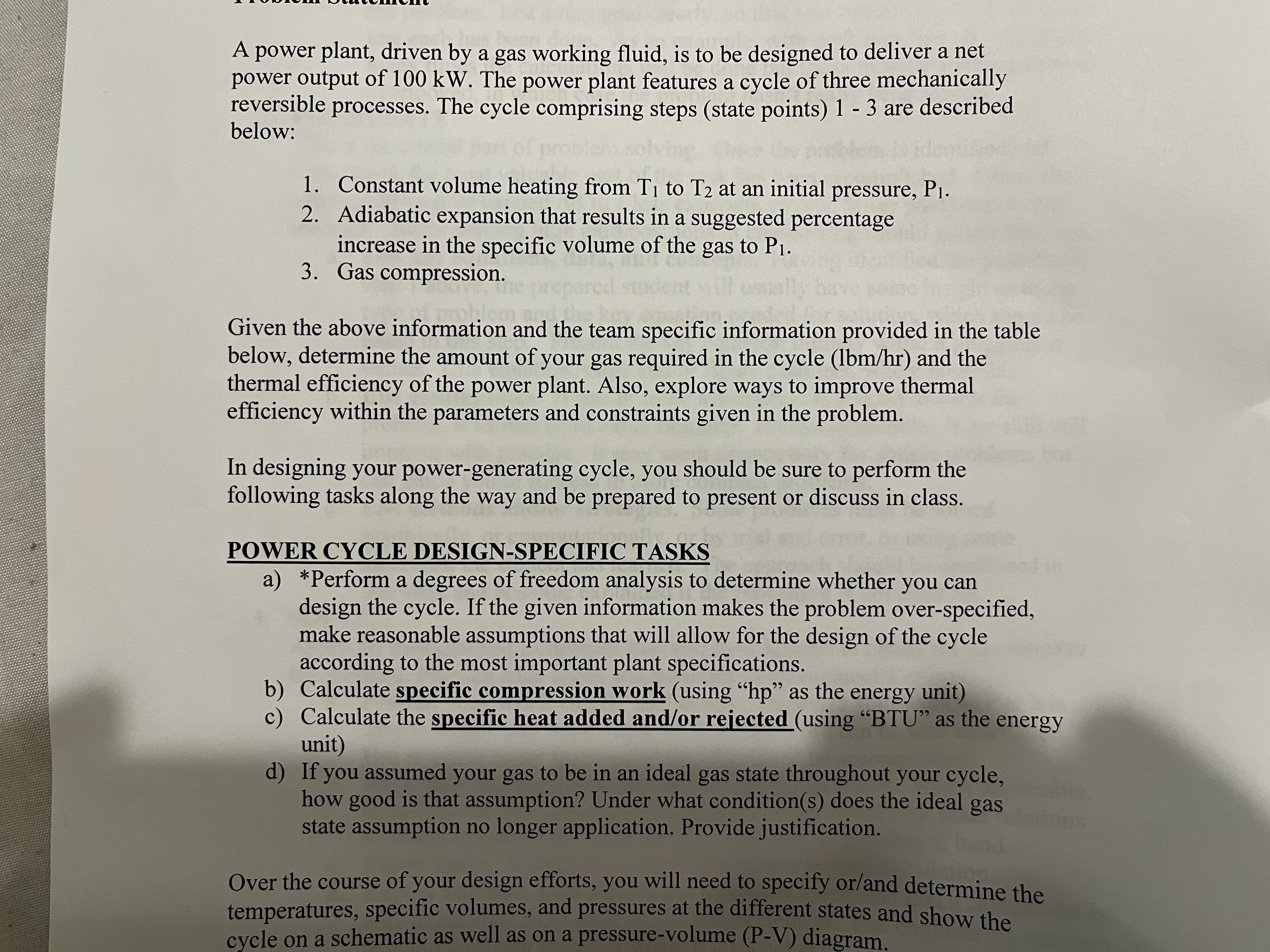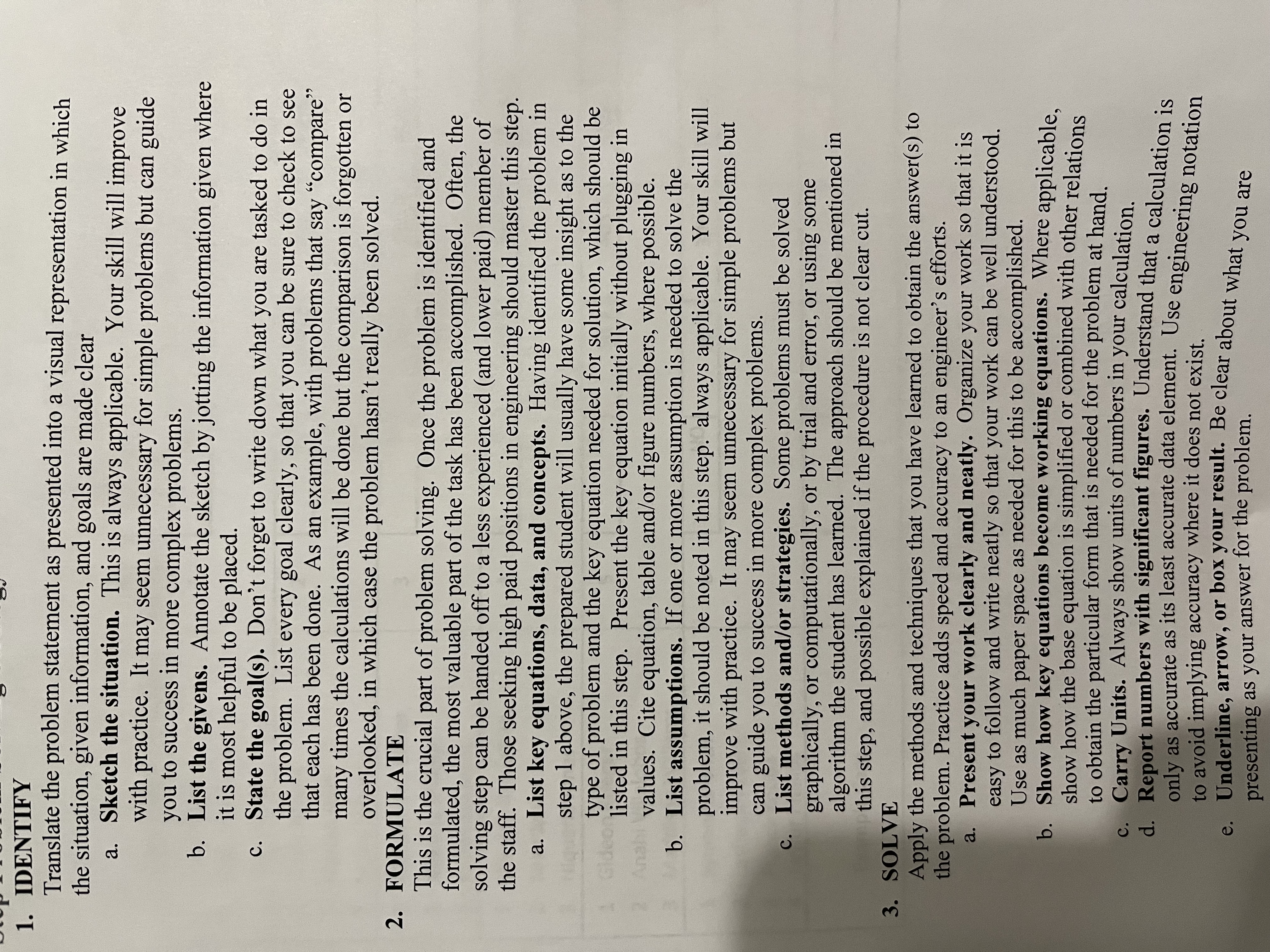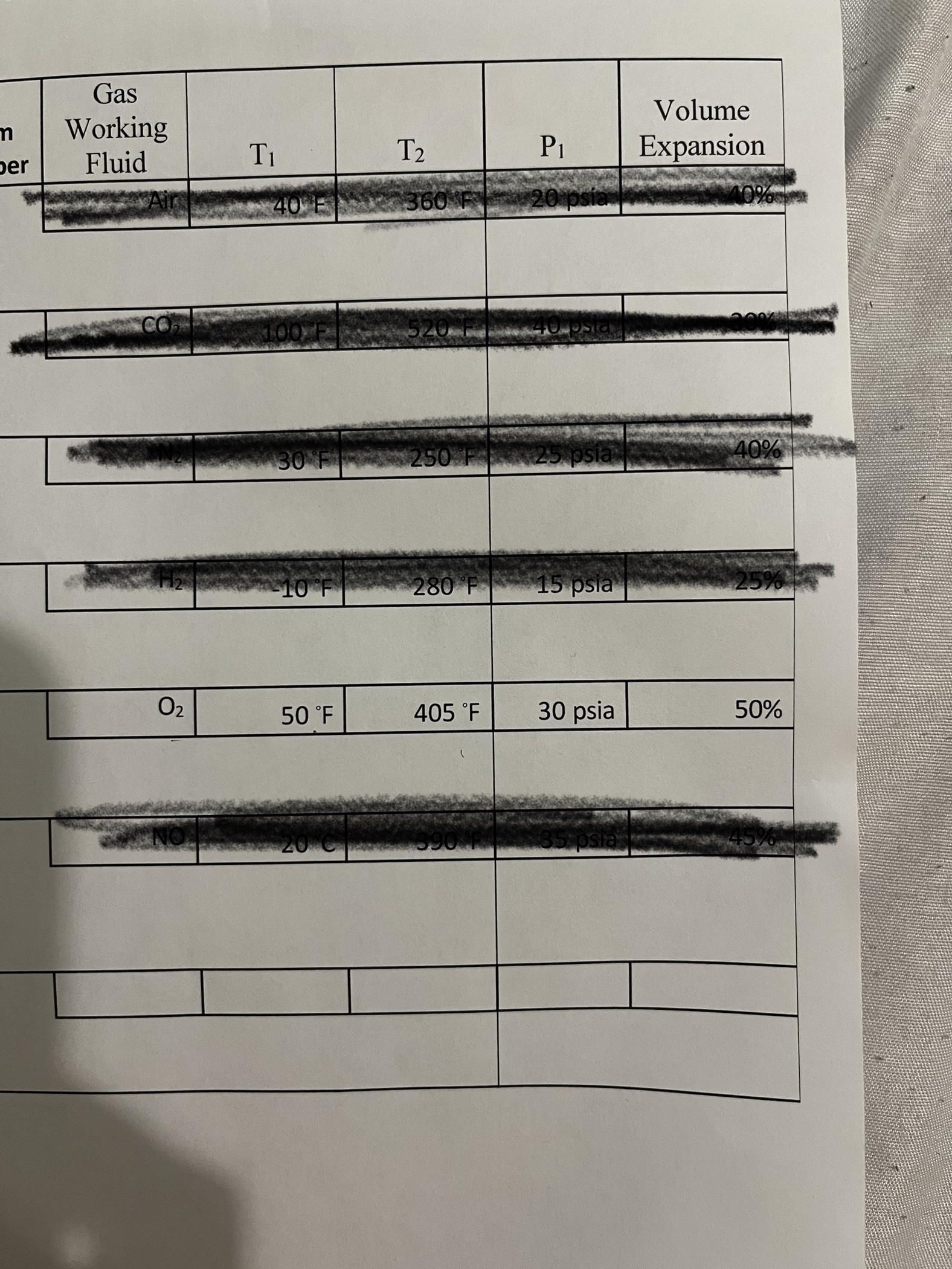Answered step by step
Verified Expert Solution
Question
1 Approved Answer
A power plant, driven by a gas working fluid, is to be designed to deliver a net power output of 100 kW. The power



A power plant, driven by a gas working fluid, is to be designed to deliver a net power output of 100 kW. The power plant features a cycle of three mechanically reversible processes. The cycle comprising steps (state points) 1 - 3 are described below: 1. Constant volume heating from T to T2 at an initial pressure, P. 2. Adiabatic expansion that results in a suggested percentage increase in the specific volume of the gas to P. Gas compression. 3. prepared and the Given the above information and the team specific information provided in the table below, determine the amount of your gas required in the cycle (lbm/hr) and the thermal efficiency of the power plant. Also, explore ways to improve thermal efficiency within the parameters and constraints given in the problem. In designing your power-generating cycle, you should be sure to perform the following tasks along the way and be prepared to present or discuss in class. POWER CYCLE DESIGN-SPECIFIC TASKS a) *Perform a degrees of freedom analysis to determine whether you can design the cycle. If the given information makes the problem over-specified, make reasonable assumptions that will allow for the design of the cycle according to the most important plant specifications. b) Calculate specific compression work (using "hp" as the energy unit) c) Calculate the specific heat added and/or rejected (using "BTU" as the energy unit) d) If you assumed your gas to be in an ideal gas state throughout your cycle, how good is that assumption? Under what condition(s) does the ideal gas state assumption no longer application. Provide justification. Over the course of your design efforts, you will need to specify or/and determine the temperatures, specific volumes, and pressures at the different states and show the cycle on a schematic as well as on a pressure-volume (P-V) diagram. 1. IDENTIFY Translate the problem statement as presented into a visual representation in which the situation, given information, and goals are made clear a. Sketch the situation. This is always applicable. Your skill will improve with practice. It may seem unnecessary for simple problems but can guide you to success in more complex problems. b. List the givens. Annotate the sketch by jotting the information given where it is most helpful to be placed. c. 2. FORMULATE This is the crucial part of problem solving. Once the problem is identified and formulated, the most valuable part of the task has been accomplished. Often, the solving step can be handed off to a less experienced (and lower paid) member of the staff. Those seeking high paid positions in engineering should master this step. a. List key equations, data, and concepts. Having identified the problem in step 1 above, the prepared student will usually have some insight as to the type of problem and the key equation needed for solution, which should be listed in this step. Present the key equation initially without plugging in values. Cite equation, table and/or figure numbers, where possible. b. List assumptions. If one or more assumption is needed to solve the problem, it should be noted in this step. always applicable. Your skill will improve with practice. It may seem unnecessary for simple problems but can guide you to success in more complex problems. c. List methods and/or strategies. Some problems must be solved graphically, or computationally, or by trial and error, or using some algorithm the student has learned. The approach should be mentioned in this step, and possible explained if the procedure is not clear cut. Gideo State the goal(s). Don't forget to write down what you are tasked to do in the problem. List every goal clearly, so that you can be sure to check to see that each has been done. As an example, with problems that say "compare" many times the calculations will be done but the comparison is forgotten or overlooked, in which case the problem hasn't really been solved. 3. SOLVE Apply the methods and techniques that you have learned to obtain the answer(s) to the problem. Practice adds speed and accuracy to an engineer's efforts. a. Present your work clearly and neatly. Organize your work so that it is easy to follow and write neatly so that your work can be well understood. Use as much paper space as needed for this to be accomplished. b. Show how key equations become working equations. Where applicable, show how the base equation is simplified or combined with other relations to obtain the particular form that is needed for the problem at hand. Carry Units. Always show units of numbers in your calculation. c. d. Report numbers with significant figures. Understand that a calculation is only as accurate as its least accurate data element. Use engineering notation to avoid implying accuracy where it does not exist. presenting as your answer for the problem. Underline, arrow, or box your result. Be clear about what you are e. m ber Gas Working Fluid 0 T 40 30 FR 10 F 50 F T P 360 F 20 psia 520 250 280 F 405 F 25 psia $15 psia 30 psia 35 psia Volume Expansion 40% 25% 50%
Step by Step Solution
There are 3 Steps involved in it
Step: 1

Get Instant Access to Expert-Tailored Solutions
See step-by-step solutions with expert insights and AI powered tools for academic success
Step: 2

Step: 3

Ace Your Homework with AI
Get the answers you need in no time with our AI-driven, step-by-step assistance
Get Started


